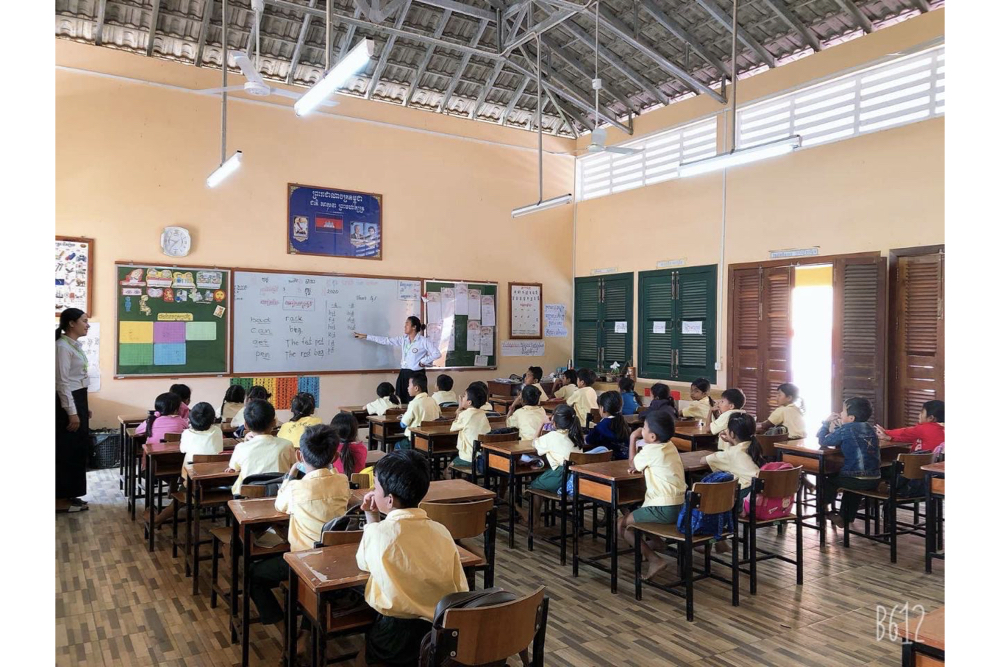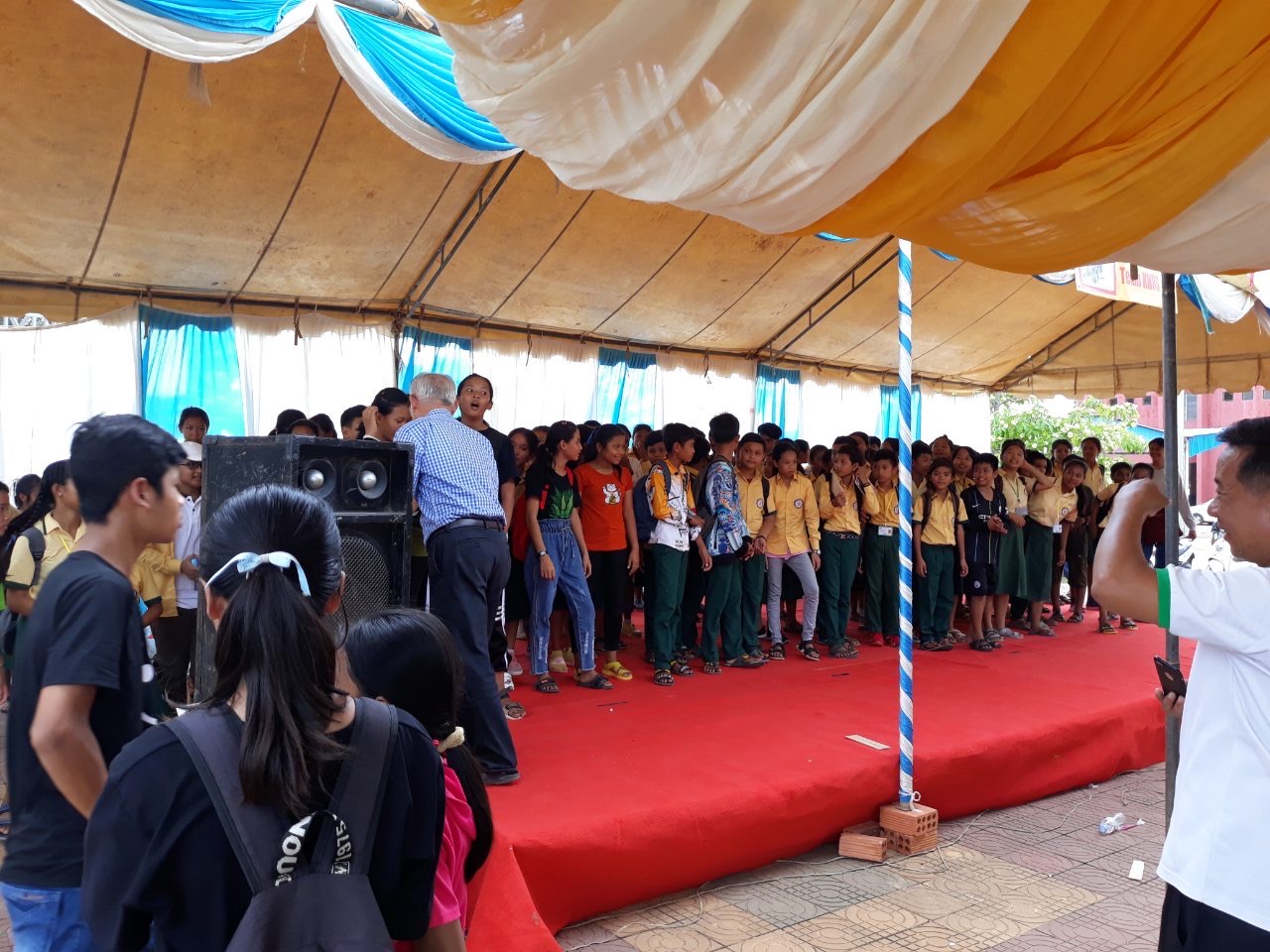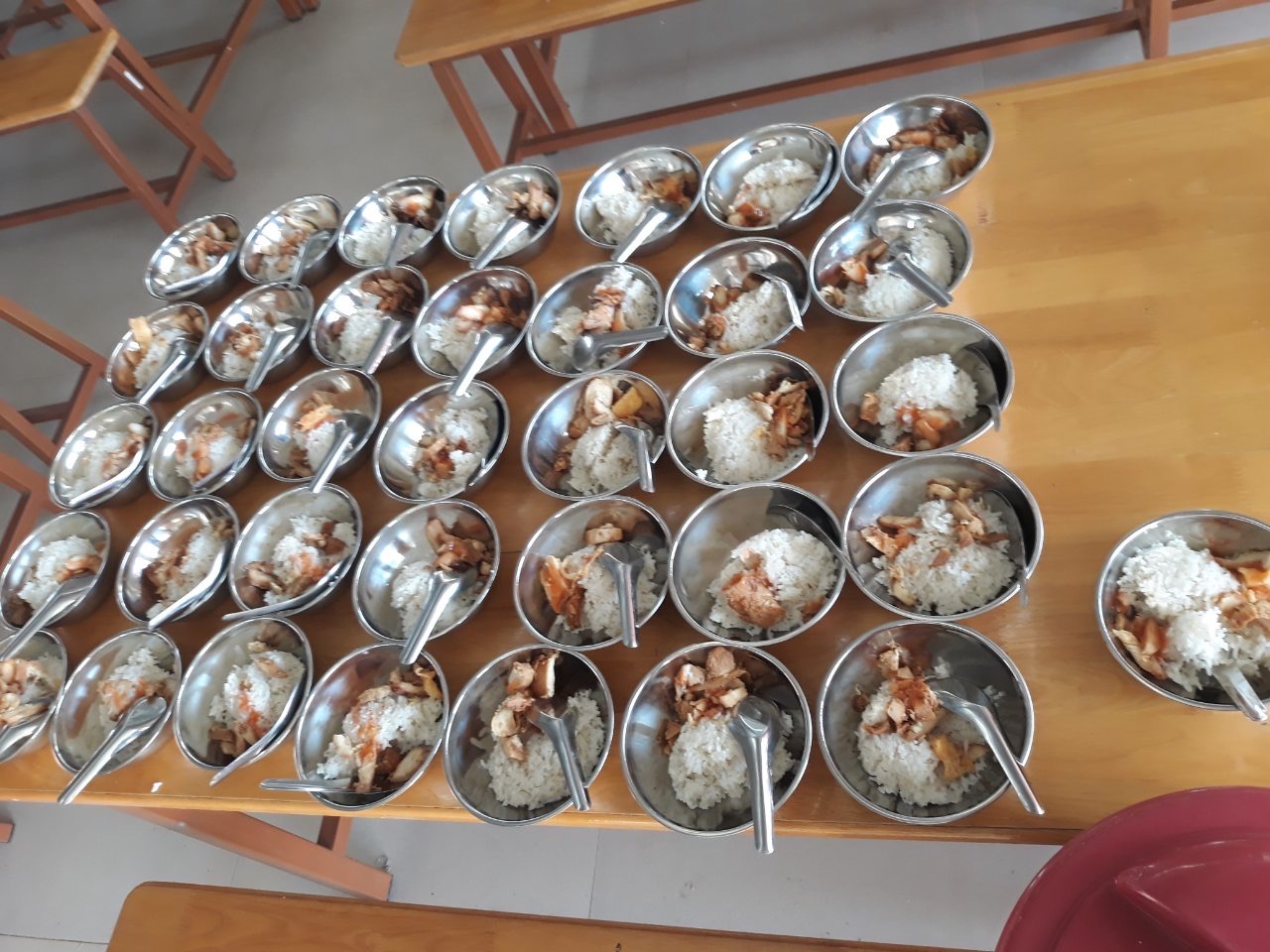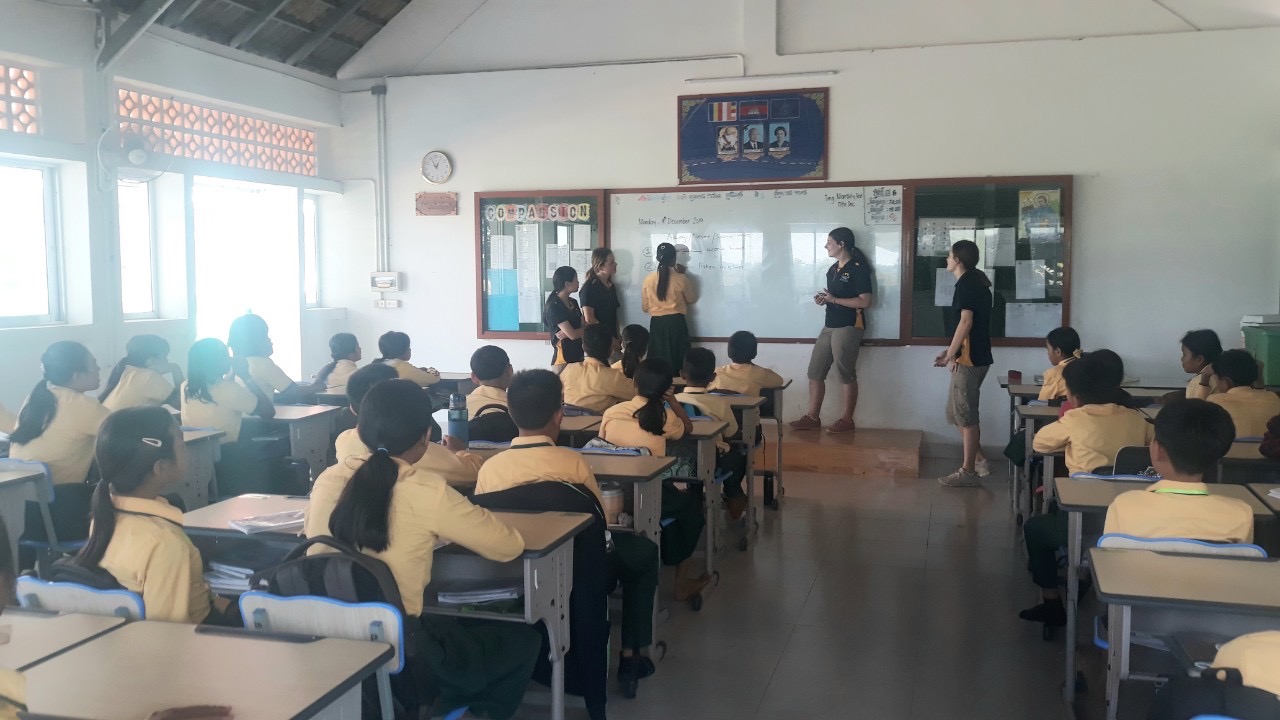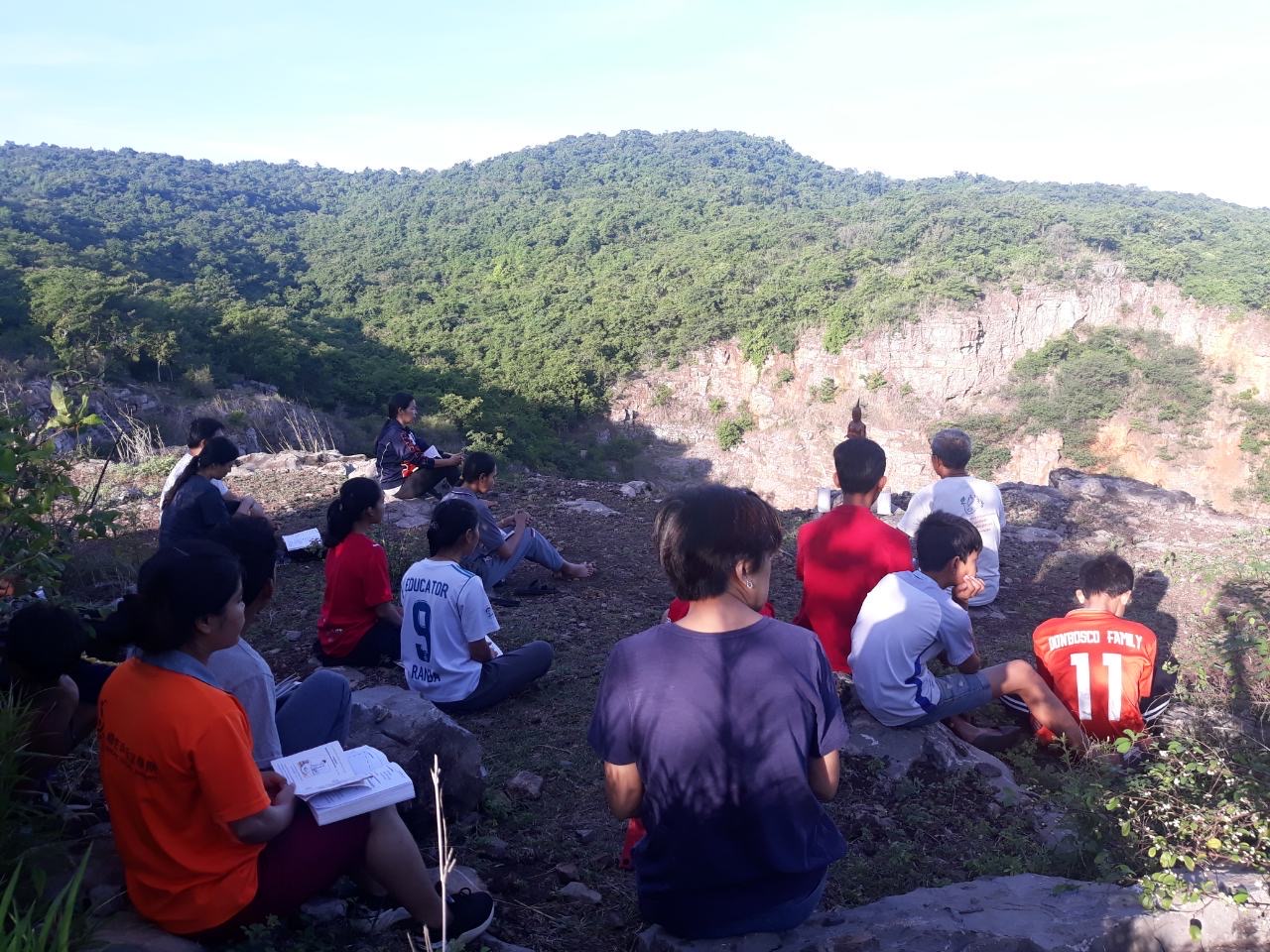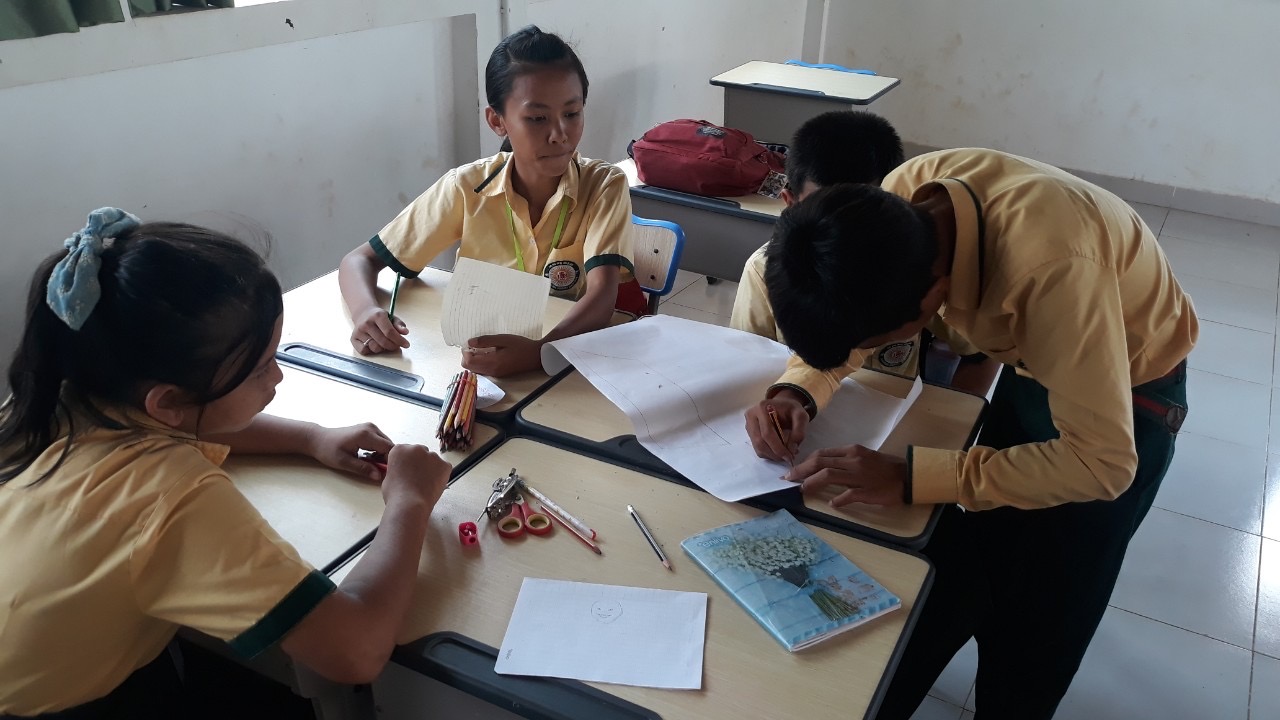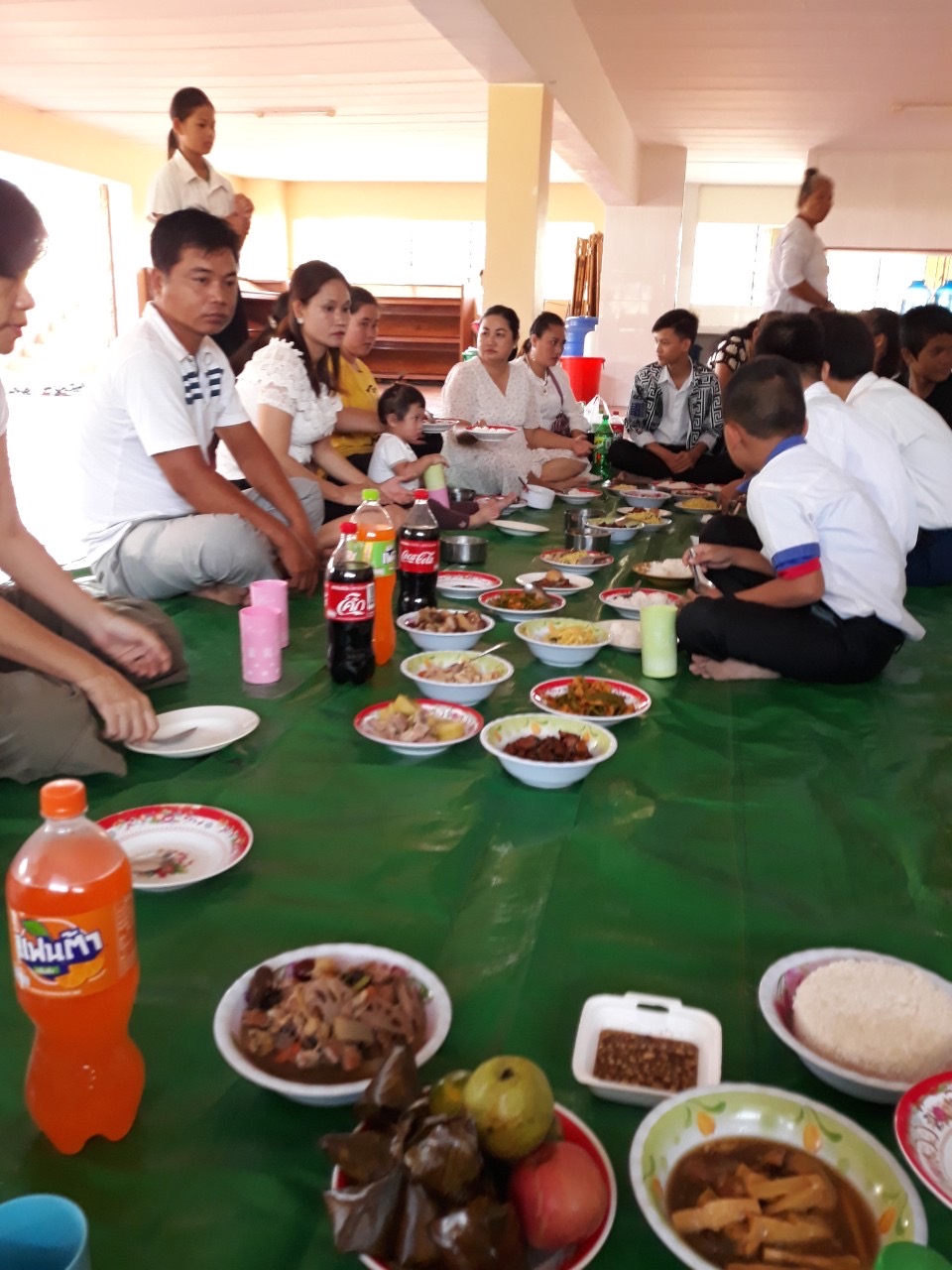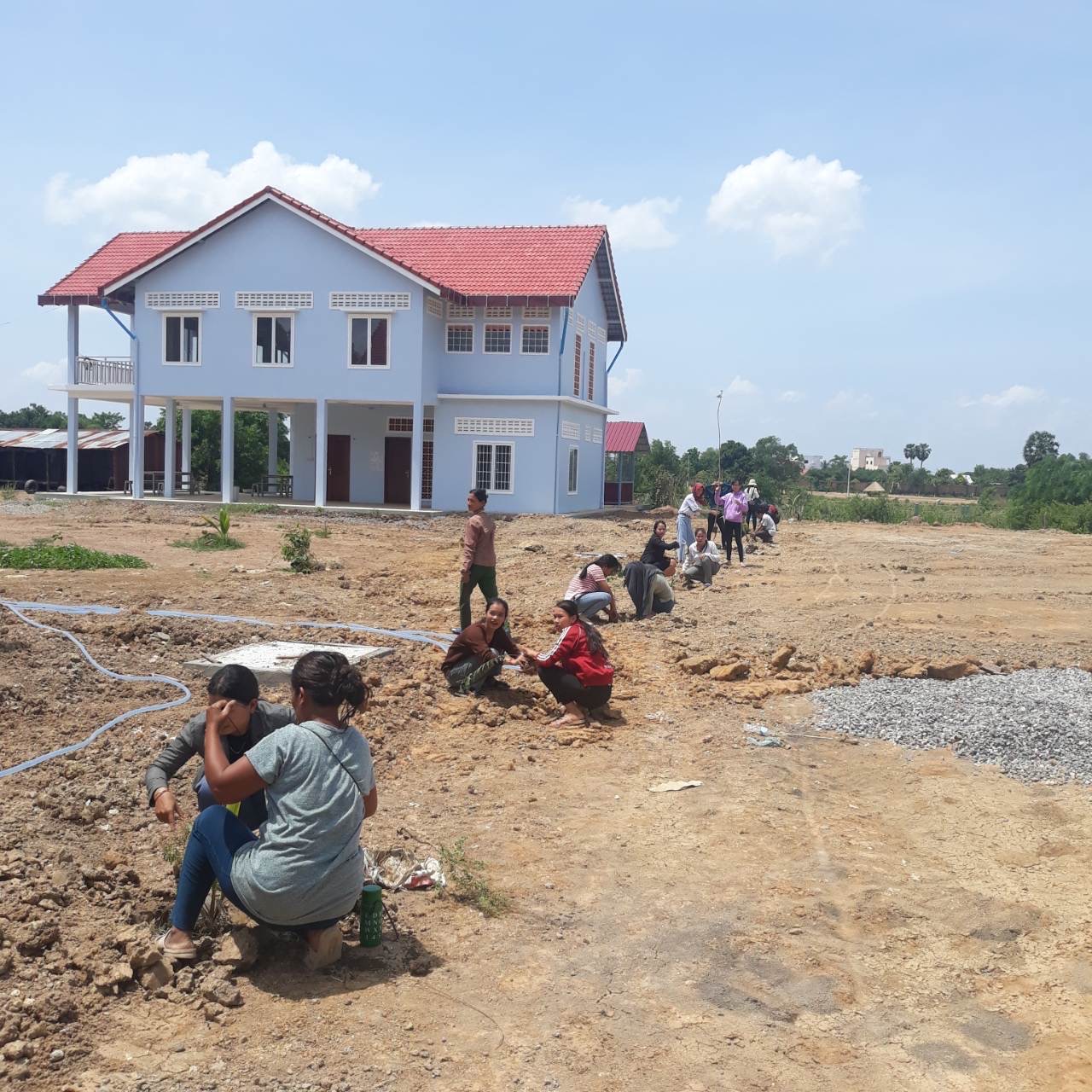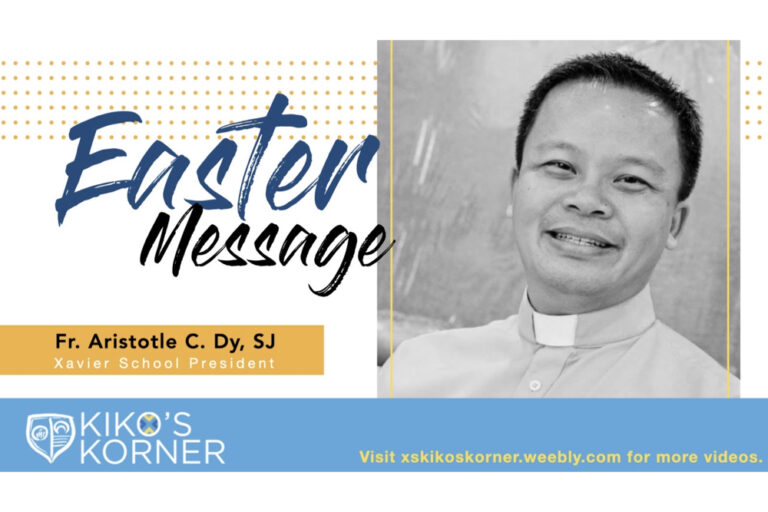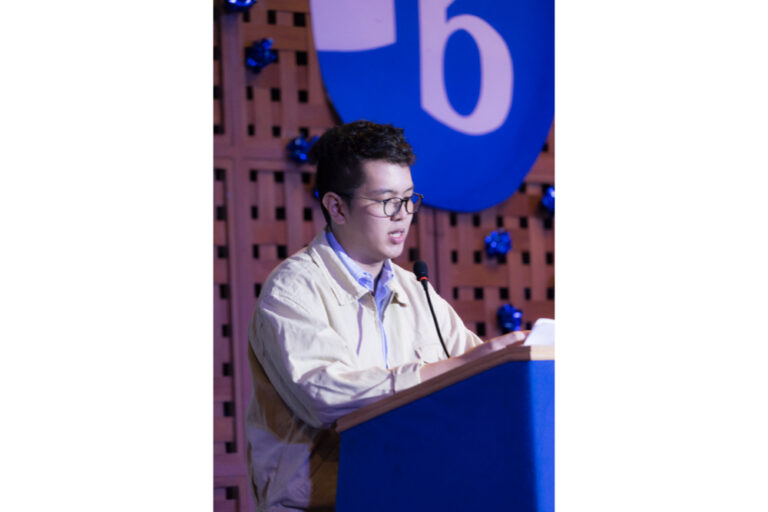Ms. Kristina Velez is an English teacher sponsored by Xavier School to teach at the Xavier Jesuit School in Sisophon, Cambodia, in partnership with Jesuit Service Cambodia. Kristina started in 2019 and is now on her second year of service at XJS. She shares her experiences with us in this article, and expresses her gratitude for the opportunity to serve. Kristina’s program is funded from the proceeds of Xavier School’s annual Christmas Drive and School Fair.
VELEZ, MA. KRISTINA
Volunteer Teacher, XJS, 2019–2021
As a teacher
My hands were a bit sweaty; my heart was pounding in my chest; and my throat and tongue felt chalky and dry. It was the first day of school. Not for me as a student, but rather, for me as an English teacher at Xavier Jesuit School – Cambodia.
Last 27th August, as I was aboard my flight from Manila to Siem Reap, there was a plethora of emotions under my throat. It was until my departure came when reality they started to kick in. It was only then that I realized that it was happening — I am about to come to Cambodia and I am going to teach English in a remote place. As I landed at Siem Reap International Airport, Bu Chok, XJS’s on-call taxi driver greeted me and brought me to my real destination — Banteay Meanchey Province.
Two days after I arrived at Phnom Bak, here at Banteay Meanchey, I have met with XJS’s school director, Fr. Quyen Vu. He is originally from Australia and was assigned to supervise the development of Xavier Jesuit School. He immediately asked me to take Khmer classes. Every day, I used to have 90-minute Khmer lessons with Teacher Sinat, our family liaison officer. The Khmer classes lasted until the end of September.
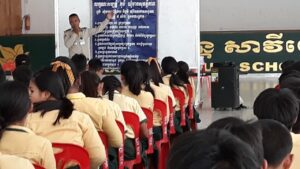
My hands were a bit sweaty; my heart was pounding in my chest; and my throat and tongue felt chalky and dry. It was the first day of school. Not for me as a student, but rather, for me as an English teacher. I entered my Grade 7 classroom, tried to speak a few phrases in English, greeted with awe, and disrupted by an awkward silence. From then, I realized it would be a challenging year.
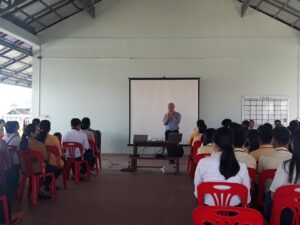
Apart from Grade 7, I also handled one section each from Grades 1 to 5. More than one-third of the students I handled has almost zero knowledge in English. Reflecting back, I also have almost zero knowledge and experience in handling students at this level. However, I took it as a challenge. Every night, aside from preparing my lessons, I also had to prepare some translations of the key ideas I would want to discuss the next day. For the first two months, I employed this approach: providing translations, gradually skimping on them, until not having to rely on them anymore. I also redirected my lessons by focusing more on listening, speaking, and reading fluency.
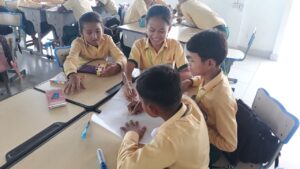
Each day, the students would come in with bright, excited eyes and an enthusiasm that was infectious. I could not help but smile when I met with each students. With my lessons, I tried to incorporate fun games and activities, contests, crafts, songs, and rhymes. Through these activities they did even realize that they were actually learning and improving their language skills.
Throughout the six months I had with them, I got to know them better on a personal basis. Their candidness was refreshing and something I looked forward to. They never ceased to surprise me whenever they try their best to express themselves in English outside the classroom.
Unfortunately, due to pandemic, the school was closed for two months. After two months, the Ministry of Education announced that the schools should find ways to provide continuous learning opportunities for the students. To address this, XJS started to provide online classes, video lessons, and study group sessions at the village. I, myself, taught at the village with all the other teachers. From Monday to Thursday, a number of motorcycles would drive out of the school carrying two teachers each. We were off to either Deylo or Phnom Bak where we would hold 2 to 3 hours of study group sessions.
In August, the school year 2019–2020 ended. We held the final exams, finalized the scores, announced the final results, and started planning for the coming school year.
As a community member
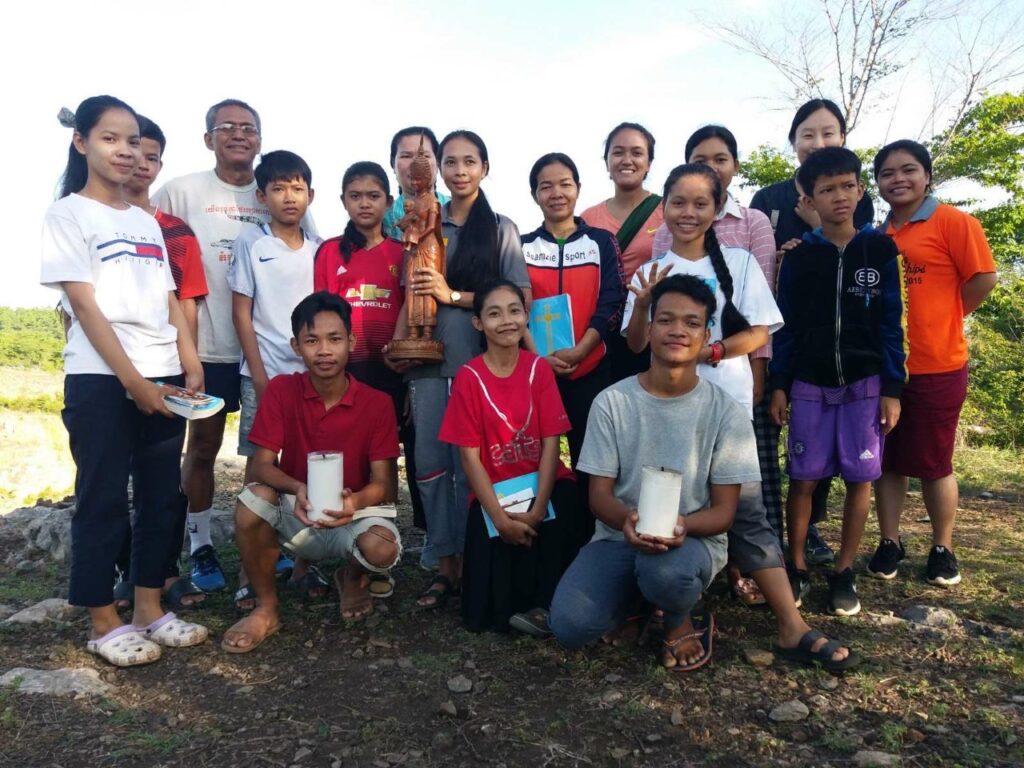
One major thing I learned in this community is the sense of detachment. As community members in this kind of environment easily come and go, it is truly difficult to be attached not only with the other members but also to the place itself.
No doubt, Xavier Jesuit School offers one of the best and most serene places among Jesuit locations here in Cambodia. The school boasts 19 hectare of vast land covered with grass, trees, flowers, and low-storey structures that keep the fresh air flowing in the vicinity. There is even a lake and a river surrounding it.
Initially, there were seven of us in the community, Fr. Quyen (school director), Br. Deepak (CLC director), Jonathan (arts teacher), Katherine (music teacher), Jungsoo (computer teacher), Matthias (PE teacher), and I. The community runs in routine. Work starts at 7AM, lunch at 11AM, work resumes at 1PM and ends at 4PM. At 6:15, we would have our weekday mass and it would be followed by dinner. We also have our own tasks such as preparing the chapel, preparing the dinner, refilling the water bottles and ice, checking the stock, feeding the dogs, and taking out the trash. My task is to set the table before dinnertime.
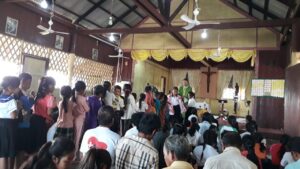
On Saturdays, we are pretty much on our own after our 7:30AM mass except when we have duty at high school. On Sundays, we have the privilege to wake up until before 9AM. At 9AM, we are off to Sisophon Church to join the Sunday mass. Each month, we would also have extended community sharing. It is the time where the members of Sisophon Church, Fr. Greg, Sr. Amor, Br. Wongyu would come to school and join us for mass, dinner, and adoration.
Eventually, our community changed. Some people had to leave and some new people came to join. Fr. Jinhyuk joined us in December. Sohna arrived in February. Guilhem came and left in March. Matthias and Jungsoo had to leave on the same month. Br. Deepak had to move to Phnom Penh in April. From 10, our community was down to 6 — Fr. Quyen, Fr. Jinhyuk, Jonathan, Katherine, Sohna, and I.
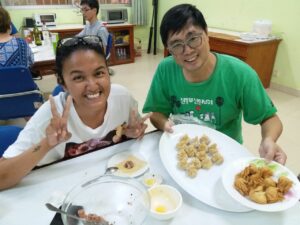 On my first year of being here at XJS helped me realize many things. It helped me realized that my academic experiences, volunteer experiences, as well as my experience in the workforce have fostered tremendous personal drive, and have helped me to become an independent, self-sufficient, and hardworking individual. It has also taught me a great deal of discipline and time-management. Further, due to this exceptional experience, I have strengthened my ability to adapt my teaching method in order to fit my learners. And no matter how much I miss my family and being at home, the circumstances would always conspire to make me feel I am just right where I should be. Definitely, this year heightened my consciousness of a broader world and plurality of culture.
On my first year of being here at XJS helped me realize many things. It helped me realized that my academic experiences, volunteer experiences, as well as my experience in the workforce have fostered tremendous personal drive, and have helped me to become an independent, self-sufficient, and hardworking individual. It has also taught me a great deal of discipline and time-management. Further, due to this exceptional experience, I have strengthened my ability to adapt my teaching method in order to fit my learners. And no matter how much I miss my family and being at home, the circumstances would always conspire to make me feel I am just right where I should be. Definitely, this year heightened my consciousness of a broader world and plurality of culture.
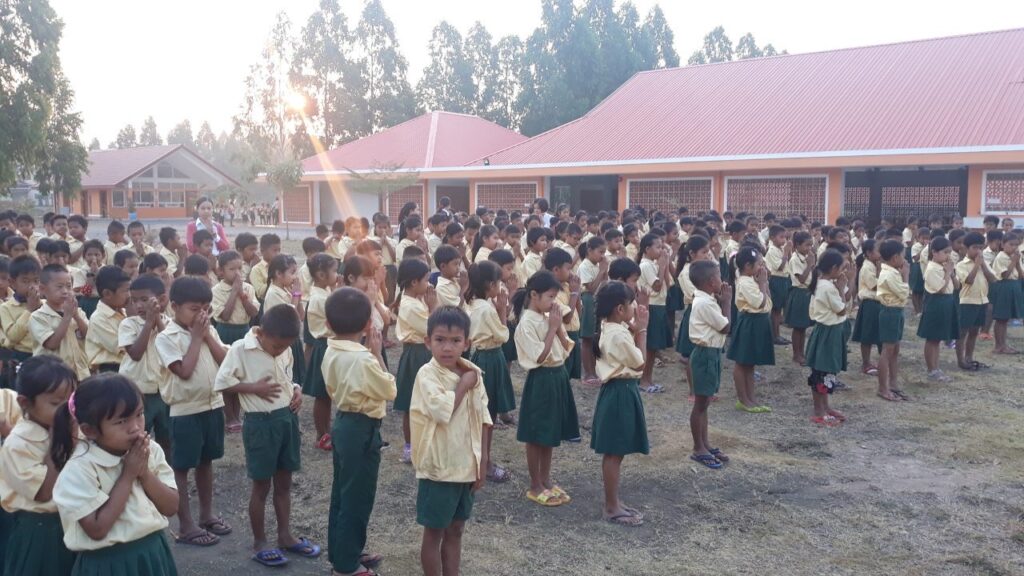
Opening Day. BRRRING! BRRRING! BRRRING! It was a lovely day. I got up from bed, took shower, prepped myself, and wore my uniform. I ran for a quick breakfast and a cup of coffee before marching to high school. As I reached the building, I could immediately hear the bustling sound from the place. There were children everywhere; staring at me wide-eyed, filled with wonder, fear, and probably a tad bit of curiosity. Then, the class began. I spoke in English, greeted them and I could see how their eyes grew even wider and blank – poof! It hit me. Was it because I have spoken a bit too fast (I was nervous, too.)? I tried to slow it down… still their faces were the same. I tried to say something in broken Khmer. Their face lit up. For the second time, something hit me. This mission would be far different. I would need to revise my lesson plans and activities. Night came, I began to scour the books and turn on my laptop. I stared at it for a long time. Time was running. I needed to know how to teach them. BEEEEEPPP! The second day of teaching began…
From trials to tri-umph… I have to admit that the first few days (or months) have been a trial and error for me. I had to mix and match lessons, strategies, and activities to get positive results. Apart from that, I should not discredit the fact that my students were also adjusting to whatever I threw their way. Months passed by, lessons and assessments came in alternately. Slowly, I could sense that our rhythms were harmonizing. They began to feel at ease with the language. Some students even started speaking the language outside the class. Normalcy was creeping in and it sent happy feeling to me. I can say that something was working favorably for me, for the students, and for the school’s mission as well. At night, I looked at my calendar. Day and night shifted quicker than before. The pages of the calendar flipped continuously. The colors of the leaves started changing. SWISHHH! SWISHHH! Will it be like this until July?
December to March. News about a deadly virus spread all over media. China Alerts WHO from several pneumonia cases. Wuhan’s seafood market shut down. First death in China recorded. First case in US. First case in Europe. First case in Cambodia. Several countries border closed. A cacophony of fear and wails assailed the entire world. Day by day, the cases increased. Day by day, we followed the news. Day by day, we were drawn towards distress and uncertainty. Students and teachers started coming to school wearing masks and carrying around hand sanitizers. Everyone became very cautious. Until… flights were put into halt. Businesses were shut down. Barricades were placed in each province. SCHOOLS IN CAMBODIA WERE ORDERED CLOSED. Students returned home and the school gates were locked. Another pang of silence came. I’m only halfway my one-year contract. I’ve taught for only five months. Do I stay to wait for the unknown? Or do I go back and linger on the feeling of an unfinished mission? CLICK-CLACK. TICK-TOCK. What should I write on my email?
April to Now… Clink-clink. Clink-clink. I pressed on my bicycle’s bell as I stopped by the big tree. We’re now holding classes in village and one of my classrooms is under that big tree. How did we get here? It was through the endless scrolling up and down from Khmer Times and incessant asking for updates from teachers, staff, and authorities in education. It was in mid-May when the school teams began planning how to conduct the study group sessions and online teaching.
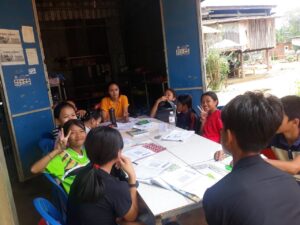
Surveys were conducted. Village chiefs, parents, and students were consulted. Teachers were asked to devise more effective and efficient ‘teaching-in-villages’ strategies and online teaching. And now — we are on our third week of conducting study group sessions in villages. There are no more 5.5-inch screens separating our students from us, teachers. The giggling, chattering, and sniffling of our students start to fill our mornings once again. The pages of the calendar ruffle more quickly once again. The excitement in learning is back. But whenever the teachers return to school, the silence begins to resurface. WOOOOOSHHH! When will it go back to what it used to be? Is there even any way back? Or should we just move forward?
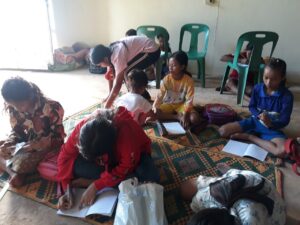
In between pauses. Uncertainty is daunting. The precariousness of whatever happening in the world remains palpable. There are times we think that we’re living in the dark here in Cambodia. The looming number of cases raises suspicions. The unpredictable move of the government triggers doubts, even fear. But despite all these perennial battles, this reality cracked my heart open and roused awe within me. That undeniable awe was present in those silent moments. Those silent moments were pauses between thoughts and actions. It was in silence when I figured out ways of teaching my students. It was in silence when I discerned that I have to see this mission until the end. It was in silence when I heard the earnest joy among our students. It was in silence when I heard the shy smiles and twinkling eyes of some of the most vulnerable families we engaged with. It was in silence when the gravitas and resilience of these people began to permeate our days.
BRRRING! BRRRING! BRRRING! A new day has come. Another round of noise and silence…
Kristina Velez , 22 June 2020 | 10:21 PM
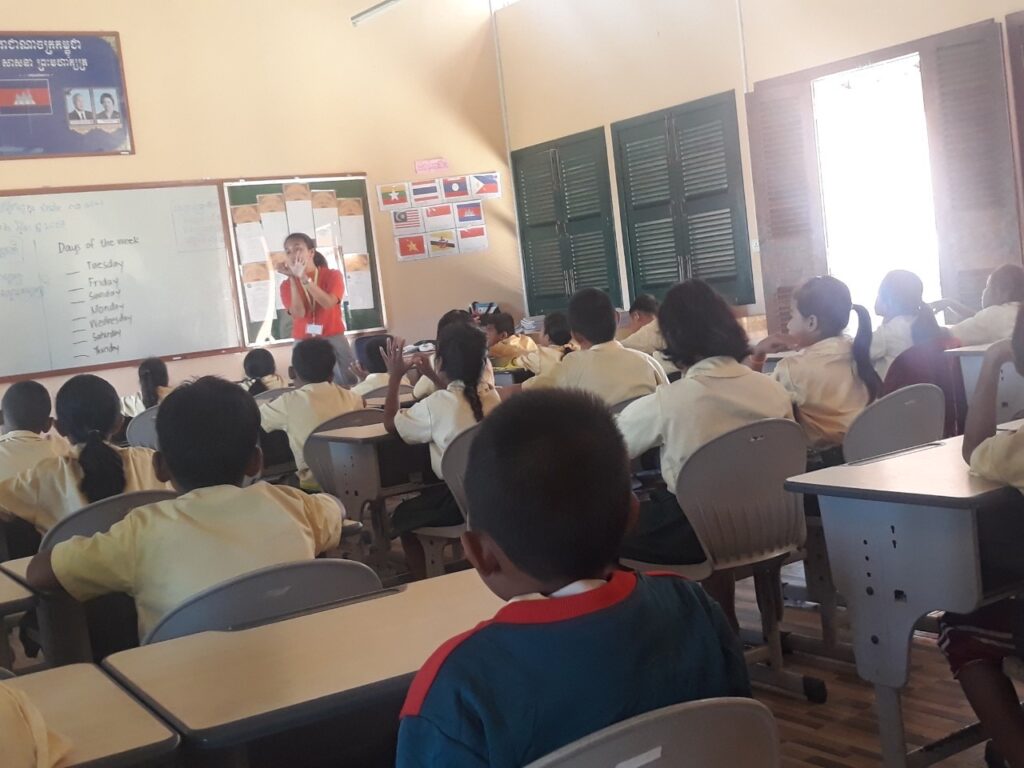
After reading the story of Amelia Earhart…
Teacher: Would you also be brave to go around the world just like Amelia Earhart?
Solina : I’m scared. I can’t go to airplane.
Nita : Teacher, me, I want!
Solina : But she died.
Nita : It’s okay. At least, I’m able to fly.
Teaching children to dream is important. Teaching children to dream early in life is even more important. But how can we foster imagination among our students? How can we encourage our students not limit themselves? And how can we show the students that there is a greater world out there probably waiting for them?
When children are between the ages of 4 and 9, children have a strong capacity for ‘having a go.’ Children do not limit themselves, their thoughts, their dreams. They have a strong capacity of popping up a solution in times of problems – building Lego blocks, flying a kite, catching a running frog, fixing a broken bicycle, even escaping from their time-out sessions. But once they grow and begin to see the daunting challenges of a world that is spinning faster than ever, these powers of imagination and dreams begin to gradually fade.
As an English teacher, every start of school year, I always help my students to shape the dream of being capable to communicate in English. It is a great starting to point for them to visualize themselves at the end of the school year. Do they see themselves able to communicate more fluently? At the end of school year, will they be able to write a paragraph in English? Will they be able to perform something using the language? Will they be able to transmit their knowledge to someone else? Do they see themselves and their classmates chatting in English? The process looks so simple; but by setting up one goal at a time can help them see how building and realizing a dream works. It creates a safe and free space for the students to think freely and accept the challenge they create for themselves without squashing the idea up front as “impossible”, “difficult”, or “ridiculous”.
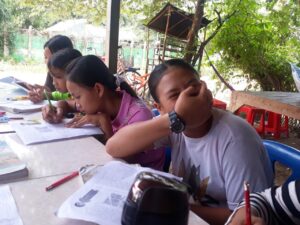
A lot of my students have big dreams about what they want to do as adults – whether that is to become a motorbike racer, a policeman, a farmer, a teacher, or even a pop star. However, there will always be a disconnect between the students dreaming and the students doing. To bridge the disconnect, I use literary pieces to show how people can dream and overcome challenges to be able to achieve that dream. Further, the literary pieces serve as their window to get a glimpse of the greater world outside Banteay Meanchey. In the story of Amelia Earhart, Nita said that she is still willing to fly even that may result to falling. In the story of The Little Prince, Sela shared that the prince taking the riskiest adventure of living his dream is remarkable. The film Coco taught them that before they can achieve great things, they first need to dream about them. And after watching Ratatouille, at times some of my Grade 7 students would meet a difficult task or activity, they would began chanting Remy said “Anyone can cook.” Through these scenarios, the students are being prepared to face the unnerving tests of the world.
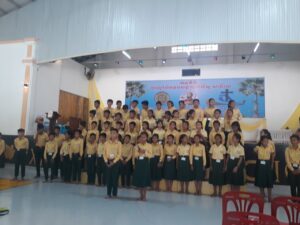
Our students are the future decision makers, engineers, doctors, chefs, and pilots. Through activities like writing about their dreams, visualizing themselves from the future, acting like their future self, or crafting and advertising their invention can harness creativity among our students. Through this experience, we can prove that their dreams and ideas matter and can be actually brought to life. It can also have a lasting impact on them as a child and on society as a whole. Eventually, these students can grow up understanding that all accomplishments are the result of the decision to try, the encounters with failures and successes, and the will to dream out loud.
Kristina Velez, 22 July 2020 | 3:10 PM




